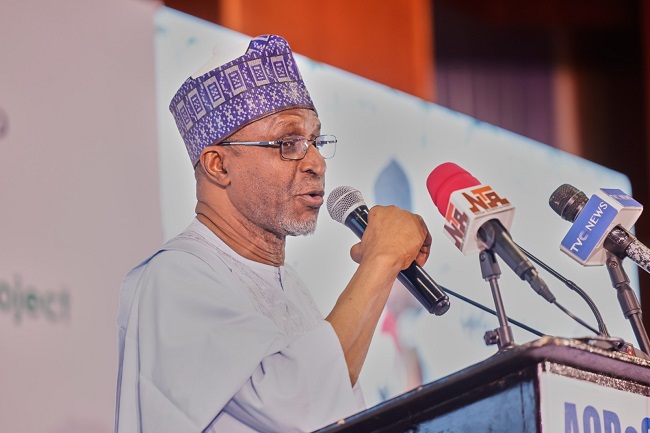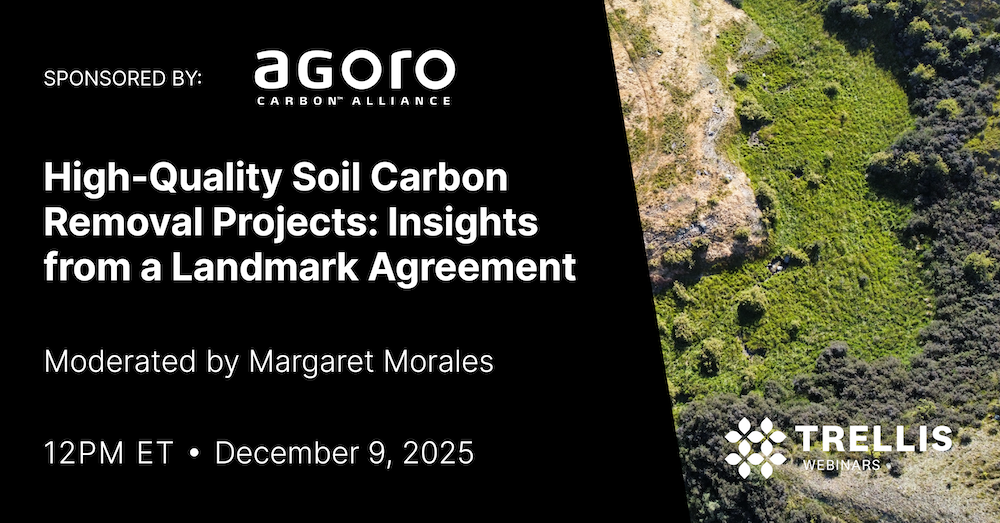Land degradation impacts 40m Nigerians – Govt – EnviroNews Nigeria

Report on the National Dialogue Addressing Land Degradation and its Impact on Sustainable Development in Nigeria
Executive Summary
A national dialogue held in Abuja on July 18, 2025, highlighted the severe impact of desertification and land degradation on Nigeria. According to the Federal Government, these environmental challenges affect the livelihoods of over 40 million citizens and have degraded 43% of the country’s landmass. The event, themed “Restore the Land: Unlock the Opportunities,” underscored the critical link between land restoration and the achievement of the Sustainable Development Goals (SDGs), particularly SDG 15 (Life on Land), SDG 2 (Zero Hunger), and SDG 1 (No Poverty).
Impact of Desertification on Nigeria’s Sustainable Development Goals
Socio-Economic and Environmental Consequences
Land degradation poses a direct threat to Nigeria’s socio-economic stability and progress towards key SDGs. The scale of the impact includes:
- The livelihoods of more than 40 million Nigerians are directly impacted, undermining efforts to achieve SDG 1 (No Poverty).
- Approximately 43% of the nation’s landmass (923,000 square kilometres) is affected, hindering national progress towards SDG 8 (Decent Work and Economic Growth).
- The degradation contributes to broader challenges, including water shortages and climate change, which are central to SDG 6 (Clean Water and Sanitation) and SDG 13 (Climate Action).
Threat to Food Security (SDG 2)
The dialogue emphasised the direct correlation between land health and food security. The loss of productive land severely compromises Nigeria’s ability to achieve SDG 2 (Zero Hunger).
- Globally, dryland degradation has led to the loss of 24 billion tonnes of fertile soil.
- The United Nations Convention to Combat Desertification (UNCCD) reports that over two million hectares of land are lost annually to degradation.
- An estimated 300 million additional hectares of land will be required globally by 2030 to meet projected food demands.
National and Global Commitments to SDG 15 (Life on Land)
Nigeria’s Policy Response and Commitment
The Nigerian government has affirmed its commitment to addressing land degradation as a national priority. These efforts are fundamental to achieving SDG Target 15.3, which aims to combat desertification and restore degraded land and soil. Government actions include:
- Establishing dedicated institutions to manage environmental issues.
- Developing policies, action plans, and programmes targeting land degradation.
- Maintaining its commitment as a party to the UNCCD.
Challenges and Investment Gaps
Despite governmental efforts, significant challenges remain. Officials warned that current land restoration initiatives are not at a sufficient scale to meet urgent national needs. A major obstacle is the substantial investment gap, which hinders the effective implementation of SDG 15. UN projections indicate that $1 billion is needed daily from 2025 to 2030 to combat land degradation globally, a figure that current investment levels fail to meet.
The Role of Partnerships and Accountability in Achieving the SDGs
Collaborative Efforts for Policy and Awareness
The national dialogue exemplified the importance of SDG 17 (Partnerships for the Goals), bringing together the Federal Ministry of Environment and the Centre for Journalism Innovation and Development (CJID). CJID’s contributions to advancing the SDGs include:
- Working with stakeholders to promote scalable, policy-driven interventions.
- Supporting research and media engagement to raise awareness of desertification.
- Training over 500 journalists across Nigeria and the Lake Chad region to spotlight land degradation issues for policymakers.
Call for Enhanced Accountability
A key recommendation from the dialogue was the need for greater accountability among land users. Stakeholders called on the government to hold organisations accountable, particularly those involved in natural resource extraction without proper regulatory adherence. This aligns with the principles of SDG 16 (Peace, Justice and Strong Institutions) by ensuring compliance with environmental laws and regulations.
1. Which SDGs are addressed or connected to the issues highlighted in the article?
SDG 15: Life on Land
- The article is centered on the theme of “desertification and land degradation,” which is the core focus of SDG 15. It explicitly mentions that these issues have “affected 43 per cent of the country’s landmass” in Nigeria and discusses the need for “sustainable land management practices to prevent and reverse land degradation.”
SDG 2: Zero Hunger
- The article directly links land degradation to food security. It states that the loss of fertile soil has “significantly reduc[ed] food production and threaten[ed] food security.” It also highlights the future challenge that “300 million hectares of land will be required to meet food demand by the year 2030.”
SDG 13: Climate Action
- The article connects land restoration efforts to tackling the broader challenge of “climate change.” It also discusses drought, a climate-related hazard, as a key issue alongside desertification and land degradation.
SDG 17: Partnerships for the Goals
- The article describes a multi-stakeholder collaboration to address the issue. The national dialogue was organized by an NGO, the Centre for Journalism Innovation and Development (CJID), with support from the “Federal Ministry of Environment.” This partnership between civil society and government to achieve common goals is central to SDG 17.
2. What specific targets under those SDGs can be identified based on the article’s content?
SDG 15: Life on Land
- Target 15.3: “By 2030, combat desertification, restore degraded land and soil, including land affected by desertification, drought and floods, and strive to achieve a land degradation-neutral world.” The entire article is focused on this target, discussing the problem of desertification in Nigeria, the government’s commitment to “combating desertification,” and the need for investments in “land restoration.”
SDG 2: Zero Hunger
- Target 2.4: “By 2030, ensure sustainable food production systems and implement resilient agricultural practices that increase productivity and production, that help maintain ecosystems… and that progressively improve land and soil quality.” The article’s concern over the “loss of 24 billion tonnes of fertile soil globally” and its impact on “food production and threatening food security” directly relates to the need for sustainable systems that improve land and soil quality.
SDG 13: Climate Action
- Target 13.3: “Improve education, awareness-raising and human and institutional capacity on climate change mitigation, adaptation, impact reduction and early warning.” The article highlights the work of the CJID, which is “supporting research and the media in raising awareness of drought and desertification challenges” and has “engaged more than 500 journalists… to spotlight land issues.” This is a direct example of building capacity and raising awareness.
SDG 17: Partnerships for the Goals
- Target 17.17: “Encourage and promote effective public, public-private and civil society partnerships, building on the experience and resourcing strategies of partnerships.” The event described, a “National Dialogue” organized by the CJID (civil society) with the “Federal Ministry of Environment” (public sector), is a clear instance of the type of partnership this target aims to promote.
3. Are there any indicators mentioned or implied in the article that can be used to measure progress towards the identified targets?
Indicators for SDG 15, Target 15.3
- Indicator 15.3.1: Proportion of land that is degraded over total land area. The article provides a direct measure for this indicator in the Nigerian context, stating that desertification and land degradation have “affected 43 per cent of the country’s landmass.” It also gives a global figure of “more than two million hectares of land… lost annually.”
Indicators for SDG 2, Target 2.4
- Implied Indicator: Rate of soil degradation/loss. The article mentions the global loss of “24 billion tonnes of fertile soil,” which serves as a metric for the degradation of land and soil quality, a key concern of this target.
Indicators for SDG 13, Target 13.3
- Implied Indicator: Number of individuals/organizations engaged in climate change education and awareness. The article quantifies the CJID’s efforts, stating they have “engaged more than 500 journalists across Nigeria and the Lake Chad region to spotlight land issues.” This number can be used as an indicator of progress in awareness-raising activities.
Indicators for SDG 17
- Implied Indicator: Amount of financial resources mobilized for sustainable development. The article implies this indicator by highlighting a funding gap. It notes that while “$1 billion was needed daily from 2025 to 2030 to combat land degradation,” the “current investments in restoration efforts fell short of that goal,” pointing to the need to measure financial commitments.
4. Create a table with three columns titled ‘SDGs, Targets and Indicators’ to present the findings from analyzing the article.
| SDGs | Targets | Indicators |
|---|---|---|
| SDG 15: Life on Land | 15.3: Combat desertification, restore degraded land and soil… and strive to achieve a land degradation-neutral world. | 15.3.1 (Proportion of land that is degraded): Mentioned as “43 per cent of the country’s landmass” affected by degradation in Nigeria. |
| SDG 2: Zero Hunger | 2.4: Ensure sustainable food production systems and implement resilient agricultural practices… that progressively improve land and soil quality. | Implied (Rate of soil degradation): Mentioned as a global loss of “24 billion tonnes of fertile soil.” |
| SDG 13: Climate Action | 13.3: Improve education, awareness-raising and human and institutional capacity on climate change mitigation, adaptation, impact reduction and early warning. | Implied (Number of people/organizations in awareness activities): Mentioned as CJID having “engaged more than 500 journalists.” |
| SDG 17: Partnerships for the Goals | 17.17: Encourage and promote effective public, public-private and civil society partnerships. | Implied (Financial resources mobilized): A funding gap is identified, with “$1 billion… needed daily” versus insufficient “current investments.” |
Source: environewsnigeria.com

What is Your Reaction?
 Like
0
Like
0
 Dislike
0
Dislike
0
 Love
0
Love
0
 Funny
0
Funny
0
 Angry
0
Angry
0
 Sad
0
Sad
0
 Wow
0
Wow
0













































































